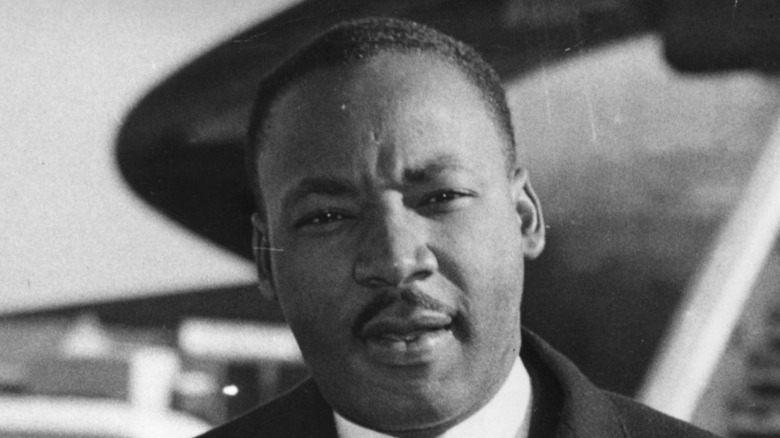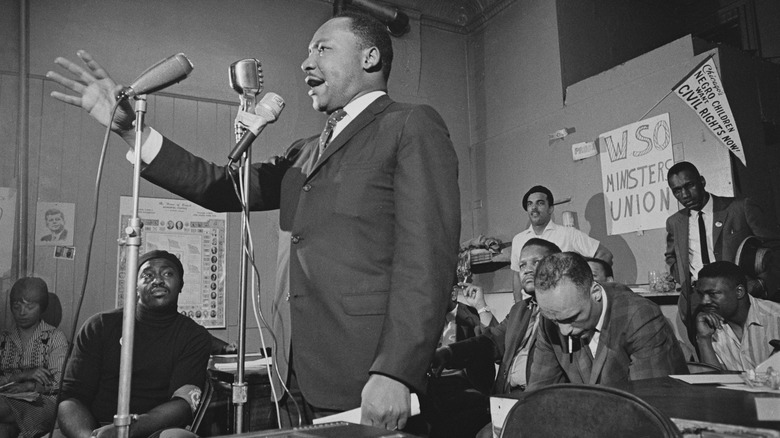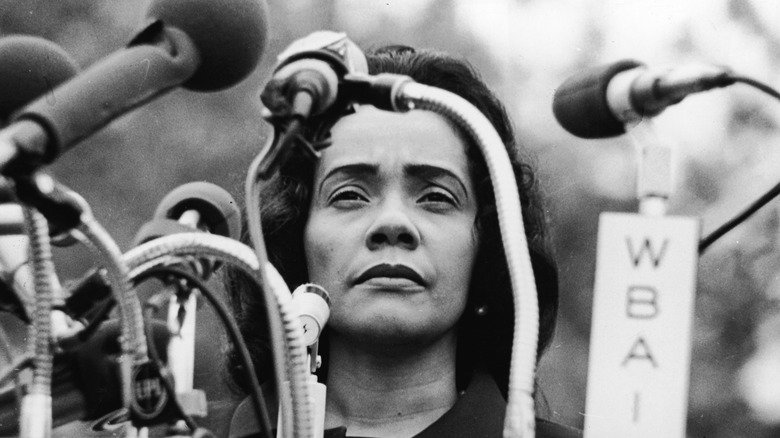Disturbing Details Found In Dr. Martin Luther King Jr.'s Autopsy Report
On April 3, 1968, Martin Luther King Jr. traveled to Memphis, Tennessee to lend his support to a sanitation workers' strike. That night, the civil rights leader delivered a moving speech at the Bishop Charles Mason Temple titled "I've Been to the Mountaintop," wherein he said, "We've got some difficult days ahead. But it really doesn't matter with me now, because I've been to the mountaintop ... And He's allowed me to go up to the mountain. And I've looked over, and I've seen the Promised Land. I may not get there with you, But I want you to know tonight that we, as a people, will get to the promised land" (via CNN). Little did anyone know that it was the last speech King would deliver.
The next night, on April 4, King was standing at the balcony of his room at the Lorraine Motel. He was scheduled to attend dinner with a minister, but at approximately 6:01 p.m., he was shot. (via Stanford University King Institute). He was immediately brought to a nearby hospital, but he never regained consciousness and died just an hour later. He was 39 years old. It was later revealed that the shooter was a man named James Earl Ray, who rented a room at a boarding house near the Lorraine Motel. He shot King with a rifle through his bathroom window. Ray was apprehended more than two months after King's assassination, and he was sentenced to 99 years in prison, as reported by Time.
Martin Luther King Jr. almost immediately died after being shot
Dr. Jerry T. Francisco, the medical examiner who worked on Martin Luther King Jr., noted that a bullet entered the activist's chin and neck area and severed the spinal cord. It was concluded that the wound was fatal, and King died shortly after he was shot, per Autopsy Files. King's right mandible was fractured, and there was a laceration on his jugular vein. His official cause of death was listed as "gunshot wound to spinal column, lower cervical, upper thoracic." There was an inquiry on whether Dr. Francisco traced the bullet's trajectory when he examined the body. According to the National Archives, a panel of forensic pathologists reviewed the report and pieces of evidence. They concluded that Dr. Francisco did not track the path of the bullet, as he had "concerns about not causing any unnecessary deformity to the body." Regardless, it was concluded that the autopsy report was accurate.
According to further investigation, the bullet entered below the right side of King's mouth and fractured his jaw. It then exited from his face, and it reentered on his neck, which hit vital arteries and fractured his spine. The autopsy report also showed that the condition of King's heart was like that of a 60-year-old's, despite him being only 39 at the time of his death. The examiner concluded that King's stressful life may have contributed to the advanced aging of his heart (via Dr. Martin Luther King). During his life as an activist, King was arrested multiple times, spent some time in jail, and survived the first attempt on his life.
The aftermath of Martin Luther King Jr.'s assassination
On April 8, 1968, Martin Luther King Jr.'s widow, Coretta Scott King, went to Tennessee four days after King's death and decided to lead a march to continue her husband's mission. According to a report by NPR, she led a crowd of around 40,000 and was dressed in black during the silent march. "I was impelled to come. I ask the question, 'How many men must die before we can really have a free and true peaceful society?" she said at that time. Coretta was supportive of her husband's work and was often referred to as the "first lady of civil rights." In a letter MLK wrote to Coretta, he said, "Let us continue to hope, work, and pray that in the future we will live to see a warless world a better distribution of wealth and a brotherhood that transcends race or color. This is the gospel I will preach to the world."
On April 11, President Lyndon B. Johnson signed The Civil Rights Act of 1968 — also known as The Fair Housing Act. It prohibited discrimination against renting, selling, and financing based on sex, religion, or race (via History). In 1986, the very first Martin Luther King Jr. Day was celebrated to honor the civil rights leader. It takes place on the third Monday of January each year to commemorate his birthday. Today, the Lorraine Motel where King was assassinated is a National Civil Rights Museum that has exhibitions and collections dedicated to the movement.


